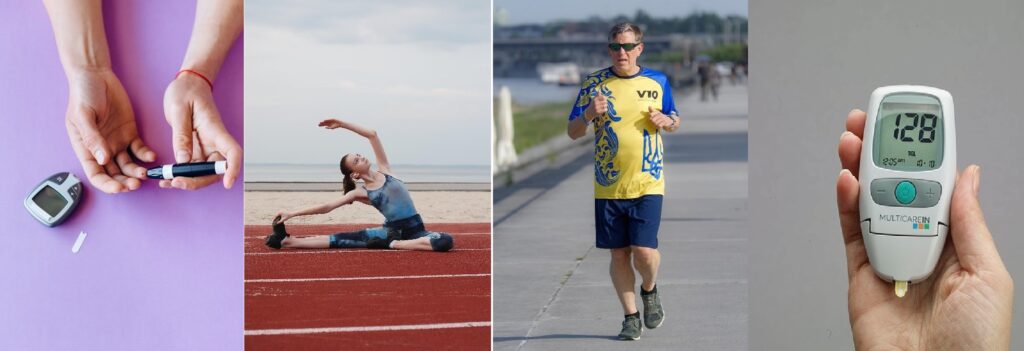Diabetes mellitus, commonly referred to as diabetes, is a chronic medical condition where the body either doesn’t produce sufficient insulin or cannot effectively utilize the insulin it produces. Insulin is a hormone secreted by the pancreas that regulates blood glucose levels. When insulin function is impaired, blood glucose levels rise, leading to hyperglycemia.
While diabetes is a lifelong condition without a cure, it can be managed through lifestyle modifications, medication, and regular monitoring. Early diagnosis and treatment are crucial, as prolonged high blood sugar can cause damage to organs and tissues, resulting in complications such as nerve damage, kidney issues, heart disease, stroke, poor circulation leading to leg pain and foot ulcers, cataracts, and vision loss.
Prevalence of Diabetes
According to the World Health Organization, the number of people living with diabetes rose from 200 million in 1990 to 830 million in 2022. Prevalence has been rising more rapidly in low- and middle-income countries than in high-income countries.
In the United States, over 34 million people have diabetes, representing about 10.5% of the population. Approximately 7.3 million individuals remain undiagnosed. Additionally, nearly 90 million U.S. adults have prediabetes, a condition where blood glucose levels are elevated but not yet high enough to be classified as diabetes. Each year, about 1.5 million new cases are diagnosed. Certain racial and ethnic groups, including American Indian/Alaska Native, Hispanic, Black, and Asian adults, are disproportionately affected compared to white adults. Nearly 27% of individuals over 65 years old have diabetes.
According to the World Health Organization, in India, there are estimated 77 million people above the age of 18 years are suffering from diabetes (type 2) and nearly 25 million are prediabetics (at a higher risk of developing diabetes in the near future). More than 50% of people are unaware of their diabetic status which leads to health complications if not detected and treated early.
Types of Diabetes
- Type 1 Diabetes: This form of diabetes occurs when the body’s immune system attacks and destroys insulin-producing beta cells in the pancreas. As a result, individuals with type 1 diabetes require lifelong insulin therapy. It is less common, accounting for about 5% of all diabetes cases. Type 1 diabetes is typically diagnosed in children and young adults.
- Type 2 Diabetes: In this type, the body becomes resistant to insulin or doesn’t produce enough. It is more prevalent and often associated with lifestyle factors such as poor diet and lack of physical activity. While more common in adults over 30, type 2 diabetes is increasingly being diagnosed in younger populations due to rising obesity rates.
- Gestational Diabetes: This type occurs during pregnancy and is characterized by high blood glucose levels. Although it often resolves after childbirth, women who have had gestational diabetes are at higher risk of developing type 2 diabetes later in life.
- Prediabetes: This is a precursor to type 2 diabetes, where blood glucose levels are higher than normal but not yet high enough to be diagnosed as diabetes. Lifestyle changes such as healthy eating and increased physical activity can help prevent or delay the onset of type 2 diabetes.
Symptoms of Diabetes
Common symptoms of diabetes include:
- Increased thirst
- Frequent urination
- Extreme hunger
- Fatigue
- Unexplained weight loss
- Blurred vision
- Slow-healing sores or cuts
- Tingling or numbness in hands or feet
It’s important to note that symptoms can develop gradually, especially in type 2 diabetes, and some individuals may not experience noticeable symptoms.
Diagnosis of Diabetes
Diabetes is diagnosed through various blood tests:
- Fasting Blood Glucose Test: Measures blood sugar after an overnight fast. A level of 126 mg/dL or higher indicates diabetes.
- Oral Glucose Tolerance Test: Involves fasting overnight, drinking a sugary solution containing 75 grams of glucose, and measuring blood sugar levels at intervals. A level of 200 mg/dL or higher after two hours suggests diabetes.
- Hemoglobin A1c (HbA1c) Test: Reflects average blood glucose levels over the past three months. HbA1c level of 6.5% or higher indicates diabetes.
A healthcare provider may repeat tests to confirm the diagnosis.

Treatment and Management
Managing diabetes involves a combination of lifestyle changes, monitoring, and medication:
- Lifestyle Modifications: Adopting a healthy diet, engaging in regular physical activity, and maintaining a healthy weight are crucial.
- Monitoring Blood Glucose Levels: Regular monitoring helps in adjusting treatment plans as needed.
- Medications: Depending on the type of diabetes, medications may include oral drugs or insulin therapy.
For type 1 diabetes, insulin therapy is essential, while type 2 diabetes may be managed with oral medications, lifestyle changes, or insulin if necessary.


Complications of Diabetes
If not well-managed, diabetes can lead to various complications:
- Cardiovascular Disease: Increased risk of heart attacks, and other heart-related issues.
- Cerebrovascular accident: There is an increased risk of stroke.
- Neuropathy: Nerve damage leading to pain, tingling, or loss of sensation, particularly in the extremities.
- Nephropathy: Kidney damage that can progress to kidney failure.
- Retinopathy: Damage to the blood vessels in the retina, potentially leading to blindness.
- Foot Complications: Poor circulation and nerve damage can lead to infections and, in severe cases, amputations.
Regular check-ups and monitoring can help detect and manage these complications early.
Living with Diabetes
With proper management, individuals with diabetes can lead healthy lives. It’s essential to work closely with a healthcare team to develop a personalized treatment plan, stay informed about the condition, and maintain a positive outlook. Support groups and educational resources can also be beneficial in managing the condition effectively.

